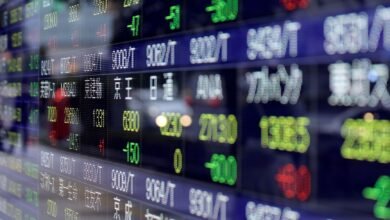ZAWYA: Saudi Arabia to drive H2 bond issuance; Q4 GCC pipeline strong

Seban Scaria
Saudi Arabia’s major issuances in September, including one aimed at funding its Vision 2030 economic transformation programme, have reinforced the kingdom’s dominance in regional debt market issuance, as a sovereign, corporate, or financial institution issuer, established over the past 18 months.
“We expect that Saudi Arabia will continue to drive DCM issuances this year in the Middle East as they look to further fund the country’s economic transformation, followed by the UAE and, to a lesser extent, the remainder of the GCC,” Nour Safa, Managing Director, Head of MENA Debt Capital Markets at HSBC, told Zawya.
International debt issuance from Saudi Arabia has reached $63 billion, out of a total CEEMEA deal volume of $271.1 billion year-to-date. The kingdom is expected to continue leading in both the number and volume of issuances through Q3 and Q4.
Saudi Arabia remained the GCC’s top issuer of bonds and sukuk in H1 2025, despite debt issuances falling 20% year-on-year (YoY). Saudi issuers raised $47.93 billion through 71 issuances in H1, down from $59.73 billion in H1 2024.
In September, the kingdom accessed the market with three prominent issuances. As part of the funding for Vision 2030, the sovereign raised $5.5 billion from the sale of dual-tranche dollar-denominated sukuk. Oil giant Aramco also visited the market, raising $3 billion from a sale of dual-tranche dollar-denominated Islamic bonds, while the Public Investment Fund raised $2 billion from a sale of single tranche dollar-denominated conventional bonds.
The sovereign Islamic bond issuance marked Saudi Arabia’s first US dollar sukuk in 2025 and was also the kingdom’s final dollar funding exercise of the year. The issuance was also the kingdom’s first sukuk compliant with AAOIFI standards, allowing the sovereign to tap all Islamic pools of liquidity.
HSBC, Citi, JPMorgan and Standard Chartered were the global coordinators and bookrunners for the debt sale. HSBC took the top spot in the MENA bond bookrunner ranking during the first half of 2025, with $8.9 billion apportioned volumes, or a 10% market share, according to LSEG data. Year-to-date the bank has clocked 99 deals and helped issuers raise a total of $ 95.8 billion.
Saudi Arabia is not alone in coming to the market this year. “A number of sovereigns that have accessed the market were already clear with investors that they may revisit the market,” Nour said.
“Already, debt capital markets issuance from the Middle East stands at over $137 billion year-to-date, and we are around $3 billion shy of the region’s best yearly volumes, which was almost $140 billion in 2020,” she noted.
Also, Abu Dhabi, Dubai, Oman, Kuwait haven’t yet visited the market this year.
“There is an expectation that some of these sovereigns may visit the market in Q3 and Q4 given where oil prices are, combined with robust economic projects,” Nour said.
Robust GCC pipeline
While an interest rate drop and healthy GCC liquidity in the coming quarters are expected to trigger transactions across regional sovereigns, banks and corporates, Saudi Arabia and the UAE will continue to drive regional volumes.
“The market will trail on most of the big trends in the first half of the year, including supply in AT1 and Tier 2 issuances, and the focus will be on shorter tenors,” another DCM banker told Zawya.
“A drop in rates sparks a pre-funding strategy toward year-end, pulling transactions planned for early 2026 into November,” the DCM banker said.
“A lot of issuers could be lining up for trades in October, after the release of their Q3 numbers. You will continue to see supply in October and early November. Issuances could taper off mid-November onwards,” Nour said.
(Reporting by Seban Scaria seban.scaria@lseg.com; editing by Daniel Luiz)
Disclaimer: This article is provided for informational purposes only. The content does not provide tax, legal or investment advice or opinion regarding the suitability, value or profitability of any particular security, portfolio or investment strategy. Read our full disclaimer policy here.
Credit: Source link






